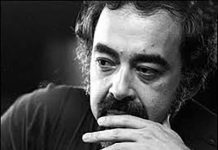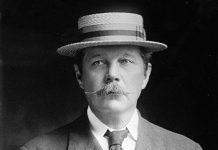Writing is a surefire way of saying, “Hey, I'm here.” It's a way of showing what you think and why it matters. Author, Anne Lamott says that writing “provides some sort of primal verification: you are in print; therefore you exist.”
I agree. I find that writing is also, for me, a way of thinking, of puzzling out problems and pondering dreams. I also love language, the sound and shape of words and all their surprising nuances. Writing is creating, and therein lies my reward.
“The act of writing turns out to be its own reward.” – Anne Lamott, Bird by Bird
Although I'm taking the fall semester off from teaching (I'm working on another master's in library science), I thought that in the spirit of back to school I'd offer you a few of what I think to be fine books on the art of writing.
Bird by Bird, Anne Lamott
Some instructions on writing and life
From the author of Traveling Mercies and Crooked Little Heart, 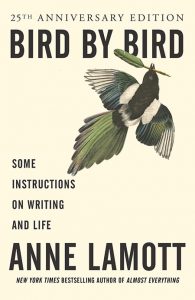 comes what is one of the most down-to-earth books on creative writing out there. Lamott's voice is quirky and honest, and she's full of practical advice on both the technique and mindset required for writing. Her sense of humour may not be for everyone; but she lays bare all the self-doubts and defeatist thoughts that plague most writers, which makes us feel better about our own writing. Some of my favourite chapters: “Shitty First Drafts” and “Radio Station KFKD.” A must-read for any writer who needs a little encouragement – or inspiration.
comes what is one of the most down-to-earth books on creative writing out there. Lamott's voice is quirky and honest, and she's full of practical advice on both the technique and mindset required for writing. Her sense of humour may not be for everyone; but she lays bare all the self-doubts and defeatist thoughts that plague most writers, which makes us feel better about our own writing. Some of my favourite chapters: “Shitty First Drafts” and “Radio Station KFKD.” A must-read for any writer who needs a little encouragement – or inspiration.
Aspects of the Novel, E. M. Forster
[aDelivered at Cambridge in the spring of 1927. As the title suggests, this is more of a critical look at the novel 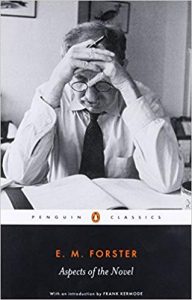 as an art form, rather than a direct how-to on creating that art. But understanding the elements of the novel and how they work together to produce the dearly sought-after willing suspension of disbelief is a sound starting point. Plus, you get a healthy dose of Forster's characteristic wry English humour. Aspects covered include the story, people, plot, fantasy, prophecy, and pattern and rhythm.
as an art form, rather than a direct how-to on creating that art. But understanding the elements of the novel and how they work together to produce the dearly sought-after willing suspension of disbelief is a sound starting point. Plus, you get a healthy dose of Forster's characteristic wry English humour. Aspects covered include the story, people, plot, fantasy, prophecy, and pattern and rhythm.
The Elements of Style, William Strunk, Jr. and E.B. White
Not quite Sports Illustrated, but just as guilty a pleasure for the grammarian. This venerable style 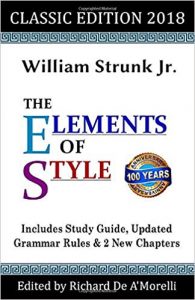 manual's cosmetic overhaul relieves it of what some may have perceived as its long-standing stodginess. Maira Kalman's splashy illustrations make reading about the correct usage of “which” and “that” and “lay” and “lie,” as well as the advantages of conciseness, a delight. The book is a shining example itself of the adage that it's not just what you say, but how you say it. The best illustration: a depiction of the proper way to break “knowledge” with a scholar in his study above “know” and a window and its ledge above “ledge.” Great fun.
manual's cosmetic overhaul relieves it of what some may have perceived as its long-standing stodginess. Maira Kalman's splashy illustrations make reading about the correct usage of “which” and “that” and “lay” and “lie,” as well as the advantages of conciseness, a delight. The book is a shining example itself of the adage that it's not just what you say, but how you say it. The best illustration: a depiction of the proper way to break “knowledge” with a scholar in his study above “know” and a window and its ledge above “ledge.” Great fun.
The Ode Less Travelled, Stephen Fry
Unlocking the poet within
This is my personal favourite of the bunch. Because I, like Stephen Fry, have a terrible confession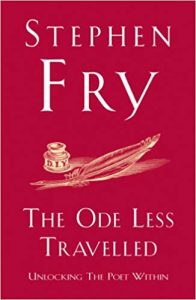 to make: I like to write poetry. If you'd rather die than make a similar admission but have even a passing interest in poetry – or perhaps a favourite poem, even if it's just one – then I heartily recommend this book. Fry (yes it's the same actor/comedian/novelist whose performance as Oscar Wilde in Wilde still has me in awe) has ambitiously broken down the elements of poetry from the iamb to the pantoum and explains them with vivacity and wit. He also borrows from a feast of poetry written over the centuries to illustrate his points. Best of all, he gives exercises that force you to write — and have fun. He completes the exercises himself and shares the sometimes embarrassing results. The Ode Less Travelled will leave you with a newfound understanding of and appreciation for how poetry works. Fry shows you that it's silly to be afraid of the trochee — Okie Dokie?
to make: I like to write poetry. If you'd rather die than make a similar admission but have even a passing interest in poetry – or perhaps a favourite poem, even if it's just one – then I heartily recommend this book. Fry (yes it's the same actor/comedian/novelist whose performance as Oscar Wilde in Wilde still has me in awe) has ambitiously broken down the elements of poetry from the iamb to the pantoum and explains them with vivacity and wit. He also borrows from a feast of poetry written over the centuries to illustrate his points. Best of all, he gives exercises that force you to write — and have fun. He completes the exercises himself and shares the sometimes embarrassing results. The Ode Less Travelled will leave you with a newfound understanding of and appreciation for how poetry works. Fry shows you that it's silly to be afraid of the trochee — Okie Dokie?
Writing Down the Bones, Natalie Goldberg
Freeing the writer within
Similar in spirit to Anne Lamott's Bird by Bird, Goldberg, who teaches writing and has authored ten books including this bestseller, presents clear advice on writing in a workshop style. 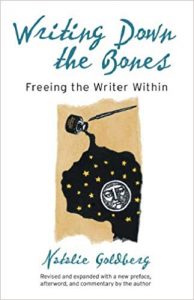
Unlike Lamott, she gives many more exercises and writing prompts. The chapters are short but pack a punch, such as “The Power of Detail” and “Don't Marry the Fly.” This is the perfect book to turn to when (dare I say it?) you might be feeling the dreaded block.
2007 Writer's Market, Robert Brewer
So you've written something you feel pretty good about and want to get it published? The Writer's Market guides are the place to go. Whether you're shopping an article on aeronautics or a book on the ivory-billed woodpecker, you'll find lists of agents and publishers, magazines and editors with contact information and areas of specialization. You'll learn whether the agency or publisher is accepting unsolicited manuscripts and how to submit them. You'll also find help on crafting a good query letter. Writer's Market is an indispensable manual for anyone seriously thinking about getting published.
2007 Novel & Short Story Writer's Market, Lauren Mosko
Same as above but with a focus on the fiction — specifically, the novel and short story.
Sharpen your writing skills.
Until next time
Elizabeth Frengel is a curator of rare books at The University of Chicago Library Book Arts and History


